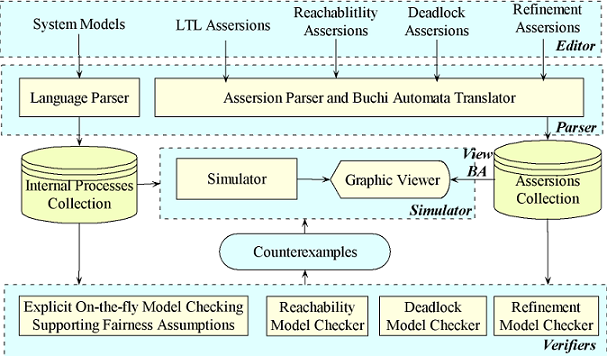 Process
Analysis Toolkit (PAT) 3.5
Help Process
Analysis Toolkit (PAT) 3.5
Help |
Service orchestration systems embrace the concept of Service
Oriented Architecture (SOA) and is gaining popularity over the time. Many of
such systems support concurrency, and it is known that concurrency bug is
difficult to discover solely by testing, thus model checking such systems is
crucial. Orc is proposed as a powerful yet elegant language for
distributed and concurrent programming which provides computational services
such as distributed communication and data manipulation via sites. With a few
concurrency primitives, programmers are able to orchestrate the invocation of
sites to achieve a goal, and meanwhile, manage timeouts, priorities, and
failures. To guarantee the correctness of Orc models, effective verification
support is desirable. The above illustrates the workflow of our approach. First, users
can specify Orc models as well as various assertion properties via the editor.
The input models of orchestration language and external services are compiled
into internal representations (i.e., LTS), based on the operational semantics of
Orc. On top of that Compositional Partial Order Reduction (CPOR) is applied.
Linear Temporal Logic (LTL) assertions are subsequently translated into Büchi
automata. Users can visualize the system behaviors via an animated simulator, or
perform verification using different verifiers. If ever certain assertions or
property is violated, a counterexample will be generated which can also be
rendered in simulator.
Copyright © 2007-2012 Semantic Engineering Pte. Ltd.